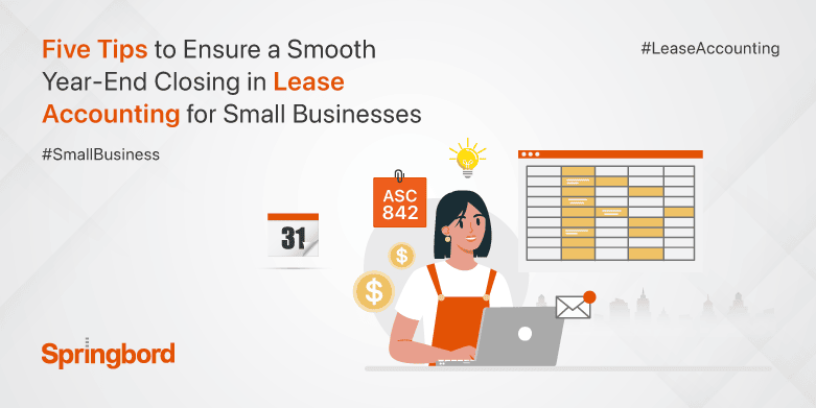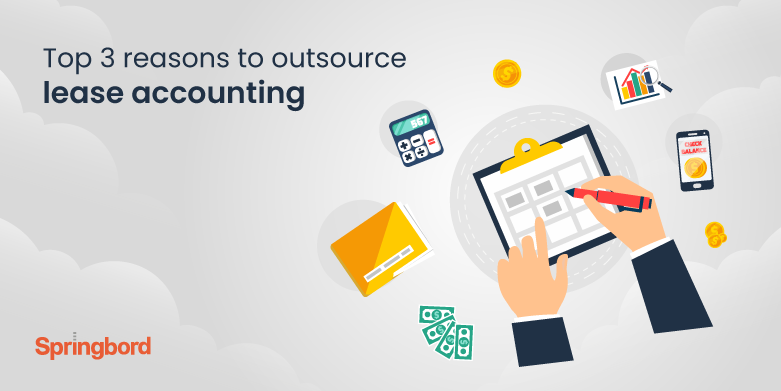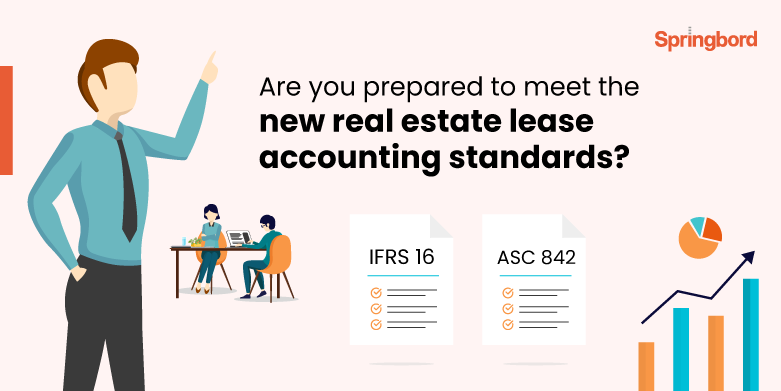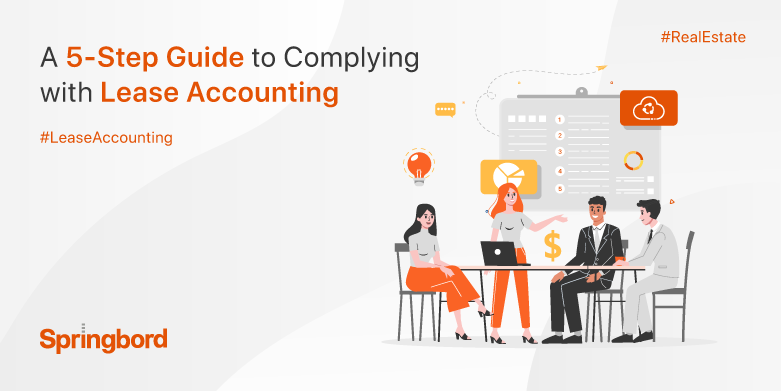 Read time 4 min
Read time 4 minLessees’ financial statements will undergo significant modifications as a result of the FASB’s ASC 842 lease accounting standard change. Lessees will also be required to make some adjustments to their books to accommodate the new revenue recognition standard and other shifts in the model.
Due to the complexity of the regulations and the difficulties in maintaining compliance, many businesses are teaming up with third-party service providers like Springbord to take advantage of their data management resources and lease accounting knowledge. If you’re interested in what we have to offer, please contact us right away.
The deadline for following the new lease accounting rules is rapidly approaching, and it has been pushed back numerous times already. Companies will need to drastically alter their lease accounting practices to comply with the new regulations.
Leases with terms of more than 12 months must now be recorded on the balance sheet, lease classification rules have changed, and the accounting for lease terminations and amendments has become much more intricate. Accounting challenges can make it difficult for small businesses to manage the transition and maintain compliance.
For all GAAP-compliant businesses, FASB has issued this new standard to replace ASC 840. Since the new standard mandates that all leases be evaluated for capitalization, this could have a major effect on the financial statements of small businesses. Knowing how the shift will affect your company and how to initiate preparations is crucial for a smooth and timely year-end close. You can get some assistance by taking the following five steps:
1. Be cautious of lease accounting traps
It’s easy to assume that the burden of adjusting to the new standards falls solely on large corporations with numerous leases.
However, there are numerous pitfalls that small businesses need to be aware of and avoid.
A. Leases with embedded payments
As a result of the new regulations, businesses must examine all of their contracts to identify any embedded leases. Leases for machinery or office space could be concealed within service contracts.
Many businesses have found that the hardest part of the lease accounting transition is locating embedded leases. It doesn’t matter how big or small your company is, you still need to conduct this analysis.
B. Having a conversation with your auditors
Whether or not to use practical expedients is just one example of how the new lease accounting rules will require you to make judgment calls based on your unique set of circumstances.
Make sure you and your auditors are on the same page by having this conversation ahead of time. The last thing you need is a shock at your year-end audit. Before you start putting together your financial reports, it’s a good idea to have a conversation with them to make sure you’re all on the same page.
2. Obtain the Necessary Data
Once you’ve established what kind of agreements constitute leases, you can begin compiling and analyzing them. In the absence of applicable contracts, it may be necessary to contact the lessor to obtain the necessary details.
The following details are required by businesses to properly set up leases under ASC 842:
- Timing of Lease Term and Renewal
- Specifics on when a renewal or cancellation period begins and ends are also included.
- All Lease-Related Payment Amounts and Methods
- Indications of whether or not the lessee has the option to buy or sell the lease
- Lease interest rate (expressed or implied) if known
- All rent payments past due or already made
3. Learn What ASC 842 Considers a Lease
According to Accounting Standards Codification 842 (ASC 842): “an agreement, or part of a contract, that gives the authority to govern the use of identifiable property, plant, or equipment (an identified asset) for some time in exchange for compensation.”
Lessee has control of the asset if it has the right to direct how the asset is used and if it is entitled to substantially all of the economic benefits that flow from the asset’s use. Vehicles, workplace machinery, real estate, and even service contracts may all be available for lease. To make this call, we must examine all of our outgoings, assets, and agreements in detail.
4. Don’t get complacent because of the hold-up.
There have been several delays in the lease accounting compliance deadline for private companies. The initial deadline set for private entities to comply with ASC 842 was January 1, 2020.
However, the FASB delayed implementation until January 1, 2021, citing reports of transitional difficulties among public companies. The implementation date was later pushed back to January 1, 2022, due to the global spread of the COVID-19 virus.
Because of these setbacks, many businesses may decide to delay the beginning of their transition. This extra time will allow you to work the transition into your weekly routines rather than having to cram at the end of the year.
5. Figure Out If You Require Assistance.
Once businesses learn how much time and energy is required to implement ASC 842, they may decide they don’t have the resources to do so on their own.
Fortunately, there is a wide variety of software and expert help available to you. Springbord’s Outsourced Accounting Services Team assists clients in a wide variety of ways, from determining whether or not a contract is a lease to completing the setup of related journal entries, debt repayment, and footnotes in financial statements.
Conclusion
To reduce the stress associated with lease accounting, small businesses can benefit from the following five suggestions. With these procedures in place, you can more easily scale your accounting processes in tandem with the expansion of your business and the modification of your lease arrangements, giving investors and other key stakeholders a clearer picture of your financial obligations.
Contact a knowledgeable member of the springbord staff if you have any concerns about the new lease standard and how it might affect your business.







